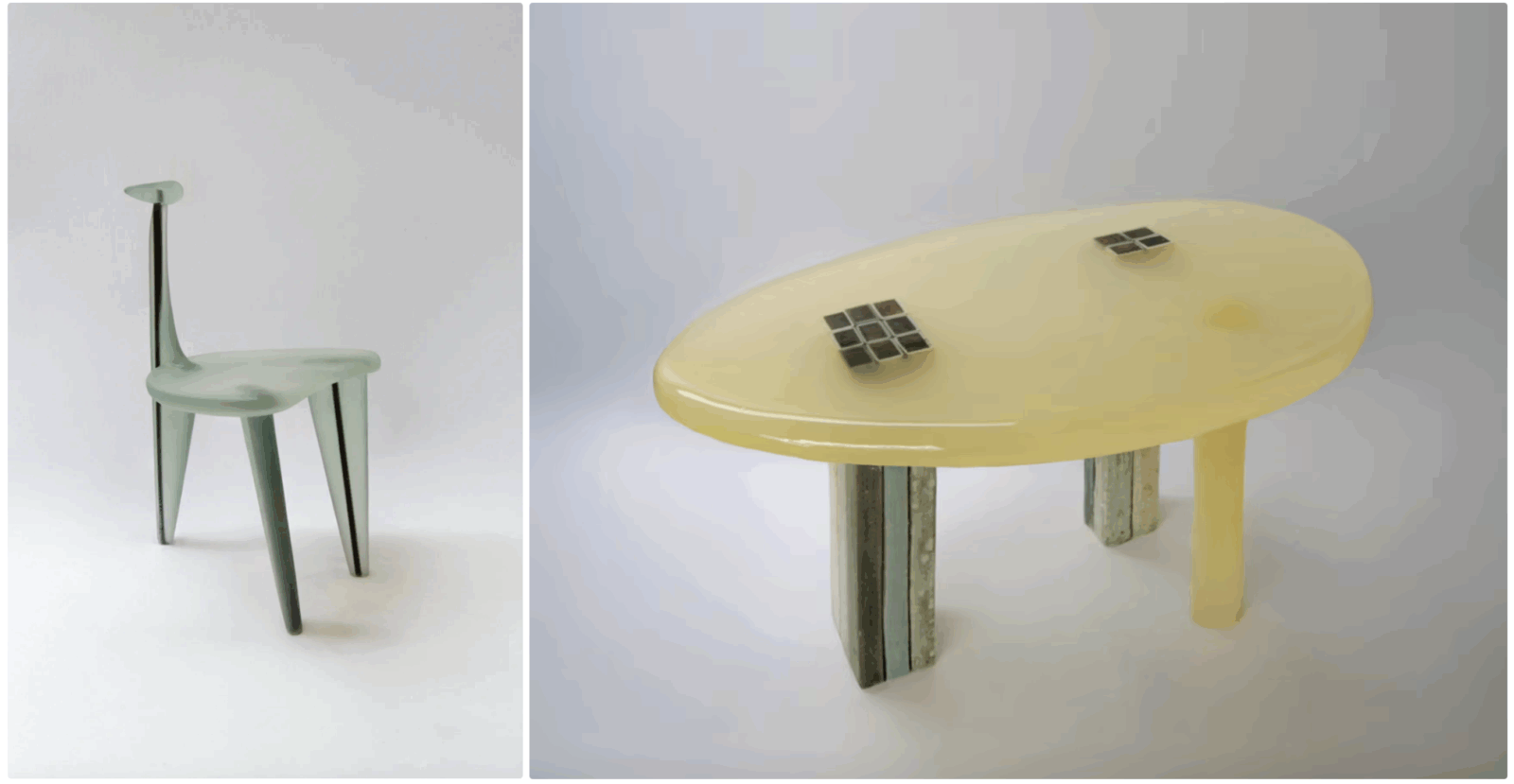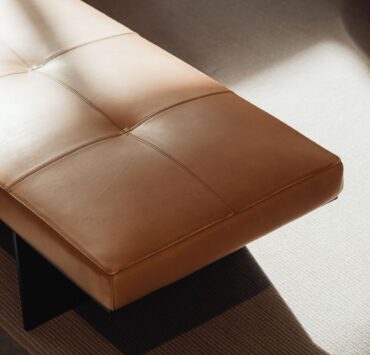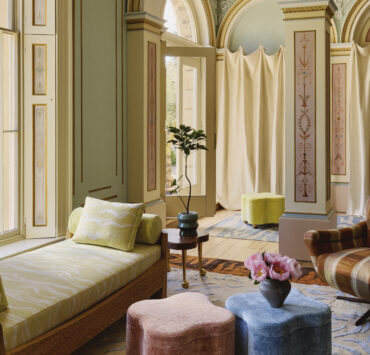Aug 2025 – Seoul, South Korea – This September, Design Miami will present its first multi-day event under the new Design Miami.In Situ initiative, with a landmark exhibition in collaboration with the Seoul Design Foundation. Hosted at Seoul’s iconic Dongdaemun Design Plaza from September 1-14, 2025, the exhibition runs in tandem with the international art fairs, Frieze Seoul and Kiaf.
Titled Illuminated: A Spotlight on Korean Design, the exhibition will present over 170 pieces of Korean design, marking the first major international collectible design event in the city. Curated by acclaimed Korean design expert, Hyeyoung Cho, the exhibition title is inspired by the Korean word “조명 (jo-myeong)”, meaning “to illuminate”. In a true celebration of place, the exhibition will spotlight the distinctiveness of Korean design, and platform the design luminaries who have shaped the country’s collectible design landscape—from deeply local and traditional craft, to pioneering design innovations—celebrating the rich design legacy while inspiring the next generation.
A designated UNESCO City of Design, Seoul is home to an abundance of cultural heritage, and a hub for design innovation. The Dongdaemun Design Plaza, designed by Zaha Hadid, stands as an iconic landmark of the city’s vibrant design districts, offering a thoughtful setting for this inaugural Design Miami.In Situ exhibition. Alongside the exhibition, the In Situ activation will also offer a complementary Design Talks program and VIP program, with further details to be shared shortly.
“At Design Miami, we are committed to presenting the best in collectible design; and Seoul is home to many celebrated and emerging designers who have been so integral to the evolution and expansion of this market. We’re also thrilled to be activating at the DDP, which holds great significance to Design Miami—Zaha Hadid received the inaugural Designer of the Year Award at Design Miami’s first edition in 2005, and now, 20 years on, we are honored to present our first-ever exhibition in Seoul within one of her iconic landmarks. We look forward to igniting a cultural exchange between local and international design communities in this vibrant and multifaceted city that so powerfully embodies design.” – Jen Roberts, CEO of Design Miami.
“This Design Miami.In Situ exhibition comes at the perfect moment: when Korean culture—spanning music, food, art, design, and craft—is thriving as a global trendsetter. The exhibition will spotlight the trailblazing designers who have opened global doors for the next generation, while also embracing the idea that today, we are all global citizens. I hope that collectors, experts, and enthusiasts from around the world will visit and be inspired by the rich diversity and creativity of Korean design.” – Hyeyoung Cho, Curator of Illuminated: A Spotlight on Korean Design.
“Design Miami’s exhibition spotlighting Korean designers and their work serves as a testament to the preeminence of Korean design on the global stage. We anticipate Seoul will become a central hub leading the global discourse on design.” – Cha Kang Heui, CEO of Seoul Design Foundation
PREVIEW HIGHLIGHTS
A Dialogue Between Past and Present
Korean design is often defined by a coexistence of tradition and the contemporary—a natural and instinctive sensibility deeply rooted in Confucianism and its respect for intergenerational exchange, which emerges as a prominent theme in Illuminated: A Spotlight on Korean Design.

Reaching back to ancient tradition, leather weaver Dahyeon Yoo (Seoul) borrows from the past to create unique contemporary designs that utilize historic techniques with technical origins in Korean rice straw Folk crafts of the Joseon period, which she was the first designer to apply to leather. Within the exhibition, she presents a pair of leather woven cases from her Harmony series (2023-2025), defined by balanced, symmetrical forms that seek to promote the importance of inner harmony.
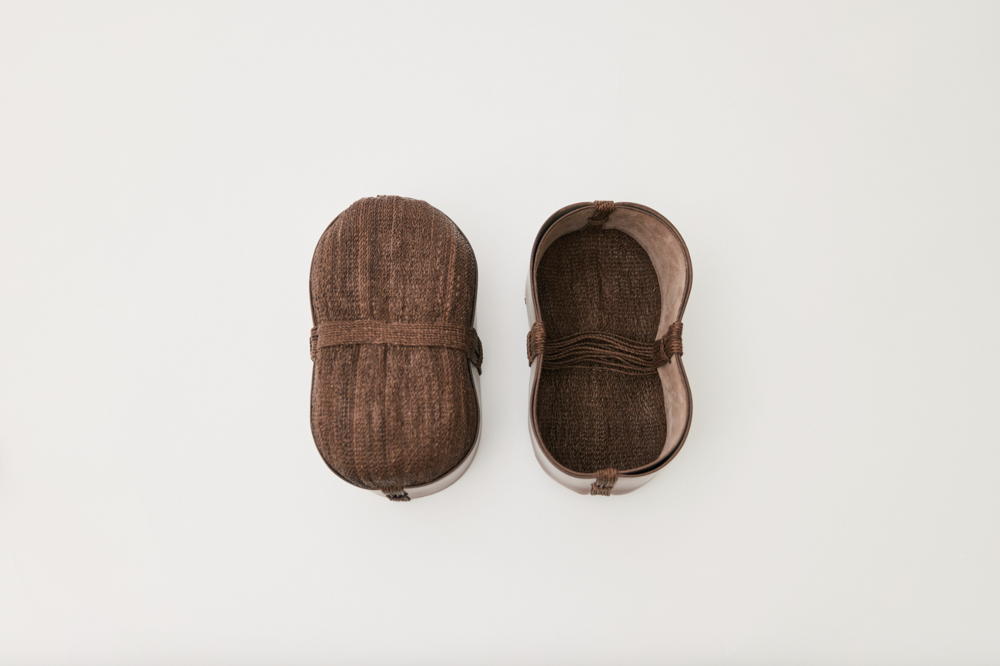
Design Miami.In Situ, Seoul 2025 (Image Courtesy of Dahyeon Yoo and Gallery LVS)
Gallery LVS & Craft (Seoul) presents a series of works by contemporary designers including Dongjun Kim, one of the country’s leading young ceramicists. Also learning from historic tradition, his practice continues the legacy of the white porcelain production method of the Joseon dynasty. Unlike many contemporary ceramicists who use electricity and gas to fuel their kilns, Kim’s slow craft process works exclusively with a wood-fire kiln, lit using timber he sources himself during the winter months. He will present Moon Jar (2024), a white porcelain ceramic vessel, striking for its simplicity, possessing a deliberately irregular, bumpy surface that was specifically achieved through the historic process of its production.
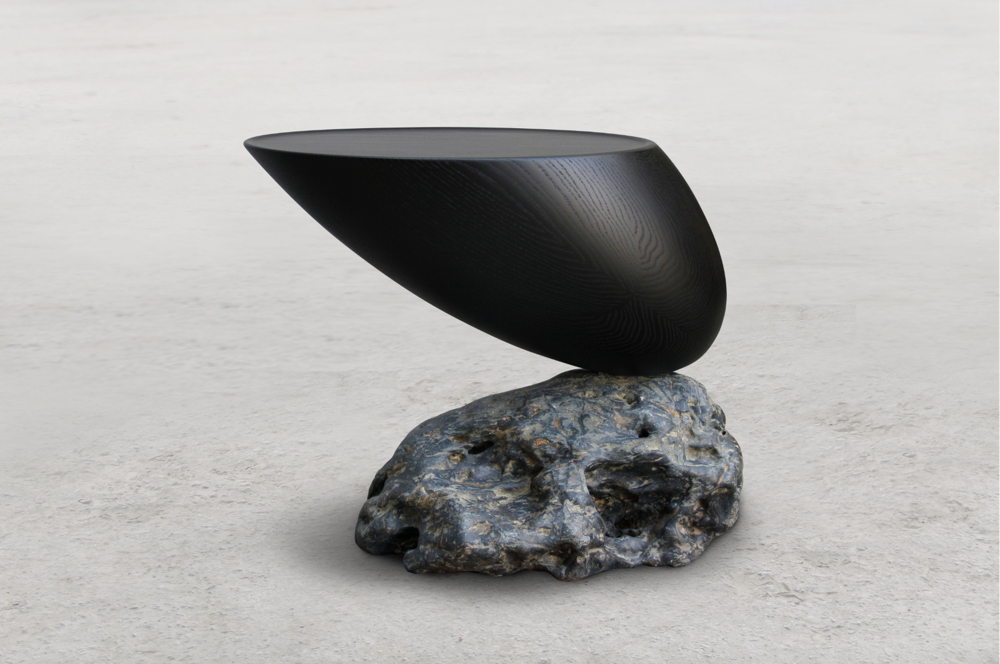
Looking to more recent Korean design history, Friedman Benda (New York/Los Angeles) presents work by Byung Hoon Choi—a pioneering figure in Korean design. Throughout his career, Choi has been devoted to fostering education and scholarship in the field, and bringing Korean artistry to the global stage. In 1977, he founded an association of young artists, The Society for the Creation of Decorative and Applied Arts, which had a profound effect on the future of applied arts in Korea. Synthesizing traditional Korean craft and contemporary design, Choi’s work is both sculptural and functional; each composition is a meticulous balance between the rough and the smooth, the natural and the human-made, the historical and the present. Employing natural materials such as wood, clay, granite, and stone, his practice is rooted in craft traditions of Korea while evoking a global and transhistorical frame of reference. In the exhibition, Friedman Benda presents his afterimage of beginning 021-577 (2021) and afterimage of beginning 018-499(2018): sculptural works that harness natural materials to seek a form of realism that excludes artificiality and embraces nature’s beauty.
From Local To Global
Collaboration is at the heart of Hyeyoung Cho’s curatorial approach, who believes in the profound power of exchanging perspectives. A respect for the coexistence of tradition and the contemporary has enabled Korean designers to adapt with agility to global trends while retaining their cultural identity, as demonstrated in Illuminated: A Spotlight on Korean Design. The exhibition also showcases the international significance of the Seoul design scene among some of the world’s leading international galleries.

Objects With Narratives (Brussels/Geneva) is committed to connecting the world’s most important craft cultures, fostering global dialogue through contemporary craftsmanship. While celebrating the legacy of K-Craft, the gallery’s goal is to strengthen connection between other countries known for their craft traditions—from Belgium, to Mexico, to South Africa—through a dialogue aimed to inspire the fusion of ideas, techniques, and cultural influences that continue to shape the future of design. At Design Miami’s Seoul exhibition, the gallery presents works by Hakmin Lee, Rahee Yoon, Sukkeun Kang, Junsu Kim, Sungho Cho, and Sungyoul Park. Kang Sukkeun offers a global approach through a practice that honors the Earth—our shared home—through a visual language designed to capture its transient elements, such as wind, sound, and scent. In Just After Sunset S1-1, the designer works with wood, lacquer, and iron to create a sculptural piece that aims to suspend in solid form the ephemeral appearance of waves right after the sun sets. Meanwhile, Hakmin Lee presents work from his Paw Series of surreal furniture pieces which originated from the designer’s fascination with the blurred boundaries between art and design, luxury fashion and street fashion, and high culture and subculture. Exploring these intersections, the designer merges playful toy imagery with functional furniture, resulting in humorous sculptural forms—such as in his Paw Bench, distinctive for its oversized, zoomorphic paws, transforming a conventional furniture piece into a whimsical, sculptural object infused with playful charm and wit. Crafted using aluminum sand-casting techniques, the piece has a uniquely tactile texture that adds to its distinct visual language.
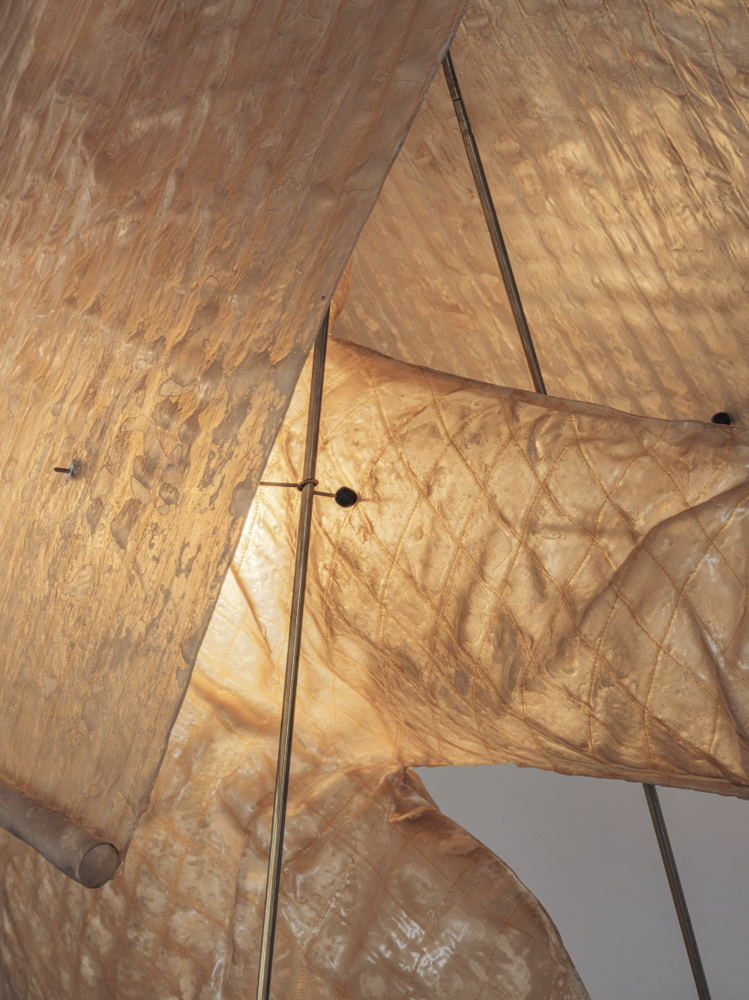
Marta (Los Angeles) spotlights the work of internationally recognized multi-disciplinary designer, Minjae Kim. Conceived as a triangulation of furnishings for an artist’s retreat, the trio comprises a bed, a chair, and a light source: Daybed With Pillow, Ruffled Chair, and Lamp With Roof–in Minjae’s mind, respectively: a place to dream, a place to sit, and illumination by which to create. In Daybed With Pillow, made by the artist in Seoul, a traditional silk mattress (Bo-Ryo) is raised off the floor via the western typology of the daybed or chaise longue, a category with which Minjae has been fascinated since first engaging with European design histories from a Korean lens. For Ruffled Chair, the designer shifts to variably soft-and-hard structures within one generous perch, riffing on the quintessential campaign-style Director’s chair and pairing it with Western upholstery in Lynchian blue velvet, with a surplus resin handle to maneuver the composition. Lamp With Roof illuminates its neighbors and their would-be occupants through a scrim of quilted fiberglass—one of Kim’s signature materialities—in a diamond motif, rendered in a diptych of silhouettes emblematic of Minjae’s practice and formal proclivities.
Salon 94 Design (New York) presents a diverse set of works by Sally J. Han x Locatelli Partners, Jay Sae Jung Oh, Jaiik Lee and Kwangho Lee. Jay Sae Jung Oh transforms everyday objects into new and extraordinary pieces of design. Her ongoing Salvage series is composed of seemingly jerry-rigged structures made of household objects, transformed and unified into sculptural design objects as a statement about the cultural pervasiveness of abundance, obsolescence, and waste. Kwangho Lee, a previous winner of a Design Miami’s Designer of the Future award, has developed a unique design practice that looks to articulate the moment that materials join together—working across media including marble, copper, enamel, and steel. In Seoul this September, he will present his Copper Enamel Chair,2022, an object defined by a sense of movement through its irregular form and distinct patina.
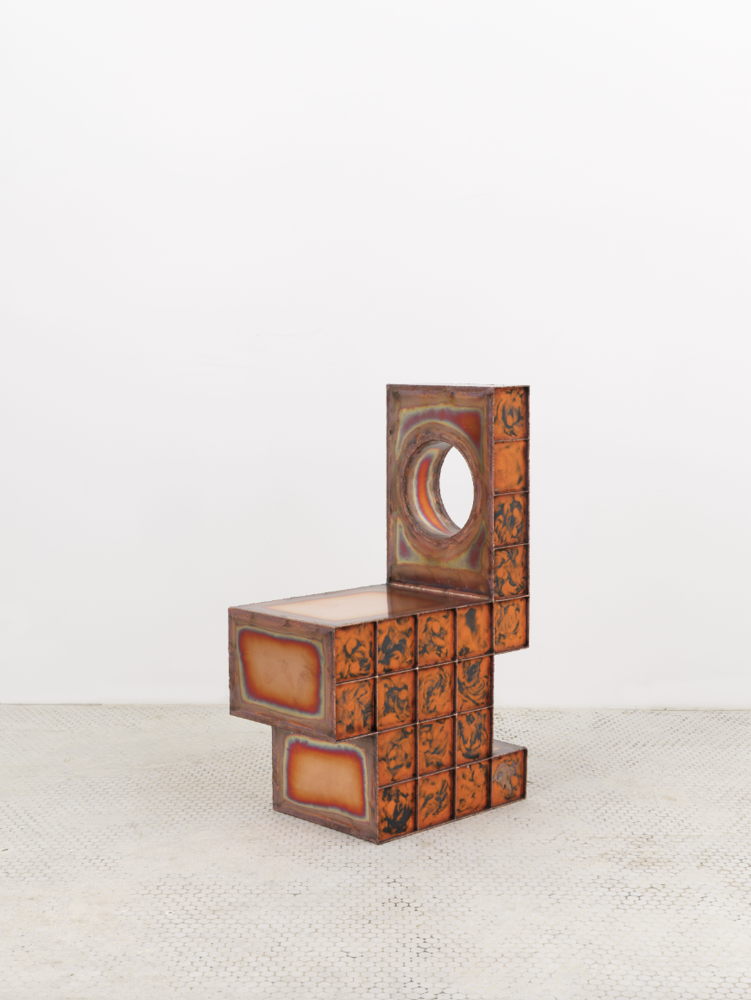
SIDE Gallery (Barcelona) presents a compelling cross-section of contemporary Korean design, showcasing the work of four leading voices: Gyuhan Lee, Donghoon Sohn, Hyeokjin Lee, and Jinyeong Yeon. Through distinct methodologies and material vocabularies, each designer contributes to a broader global vision of what contemporary design can be—conceptually rigorous, materially conscious, and deeply rooted in cultural reflection. Among the highlights set to go on show, Gyuhan Lee redefines everyday detritus through the lens of traditional Korean craft. Utilizing the packaging of ubiquitous global brands such as McDonald’s and Nike, Lee hand-weaves discarded paper into functional furniture and objects through a process of poetic reinvention.Also showing with SIDE Gallery is Hyeokjin Lee, offering a thoughtful commentary on human interaction and isolation. The designer’s Invisible Chair series is a thought-provoking examination of the boundary between presence and absence. Lee conceals chairs within the structure of fences—objects designed to protect, demarcate, or exclude–using a visual metaphor to question the roles we play and the spaces we inhabit.
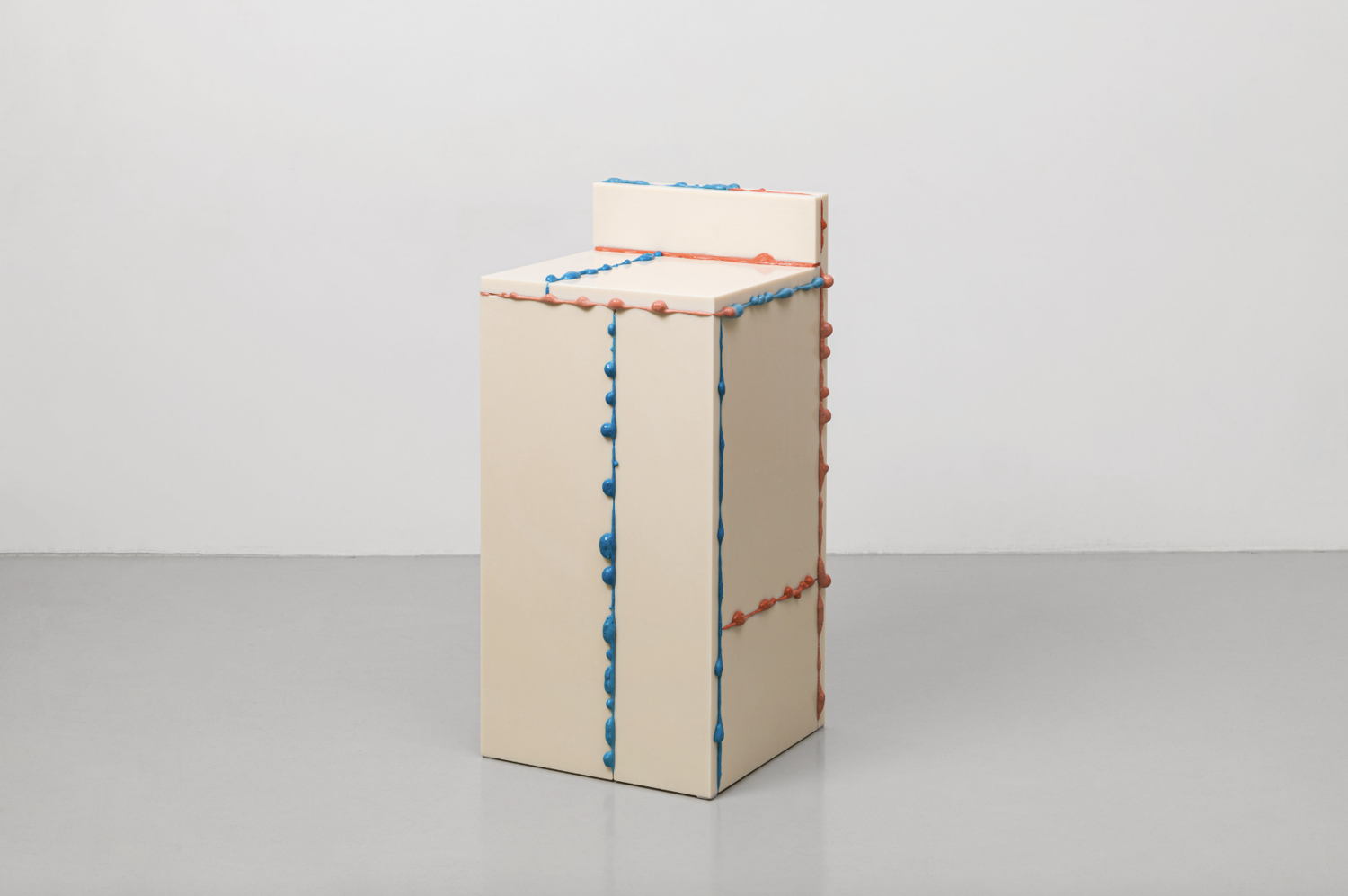
Well established on the Korean design scene, Seoul-born Wonmin Park is now based in Paris—a city he views as vital for its rich historical and cultural design legacy. His unique work offers a distinct visual language that synergies diverse influences, and will be on show in Seoul with international collectible design gallery Carpenter’s Workshop Gallery (New York/ London/Paris/Los Angeles). At the Design Miami exhibition, he will present multiple new works created this year that take diverse cues both from the natural and industrial world. Highlights include work from his Stone & Steel series, including a Console and Bench, pieces that juxtapose the contrasting natures of primordial volcanic rock and modern industrial steel, cut to shape with machine precision.
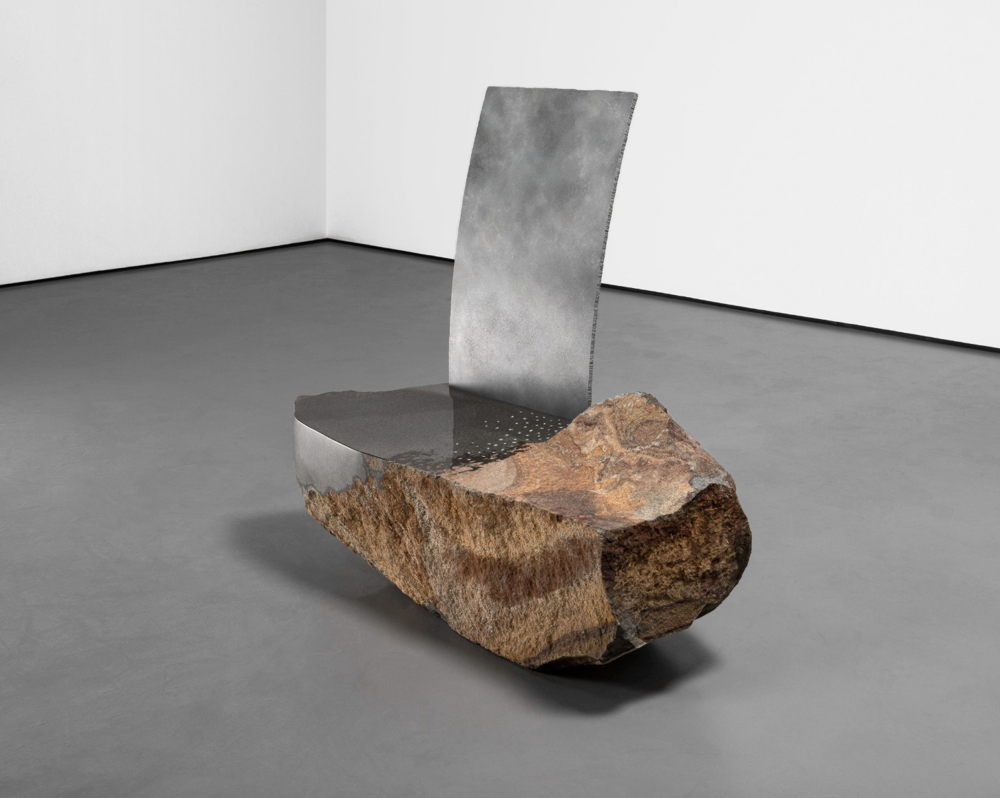
UK-based Charles Burnand Gallery (London) also joins the exhibitor list, offering works by six of Korea’s most compelling voices in collectible design: Mia Jung, Myungtaek Jung, Heechan Kim, Kyeok Kim, Jungin Lee, and Weon Rhee. Kyeok Kim is fast becoming an authority in material development and exploration; her radical approach to materiality harnesses the potential of traditional techniques to redefine design traditions, in this instance challenging what a chandelier can be. Debuting in the exhibition, her new chandelier, Second Surface Chandelier 02, extends Korea’s centuries-old ottchil lacquer tradition into an atmospheric, sculptural form—weightless, raw, and spectral. Layers of crochet copper wire are meticulously bound and lacquered with ottchil, carbon, and wood, creating a structure that refracts and absorbs light like a living organism. Meanwhile, Myungtaek Jung employs cast bronze to explore presence, ritual, and stillness through work including his new Pounding Silence bench (2025), inspired by the weight and endurance of Korea’s monolithic daetdol stones, ancient standing stones used for marking boundaries and ceremonial sites.
Craft and Materiality
A strong respect for crafts and materiality are a defining strength of Korean culture, which values thoughtful and inventive material use, and an appreciation of slow craftsmanship in our fast paced world. This is evident across many of the exhibitor presentations.
J. Lohmann Gallery (New York) presents work by Jongjin Park, whose inimitable ornamental language harmoniously combines materials that are seemingly at odds with one another to create his sublime and sculptural vessels. He paints porcelain slips onto single sheets of everyday paper towels. Jongjin then layers up to 1,000 individual sheets of paper to form spectacular millefeuille vessels with amazingly colorful and surprising textures. The innovative technique was developed by Park based on his experience with the centuries-old Moonjar craft.
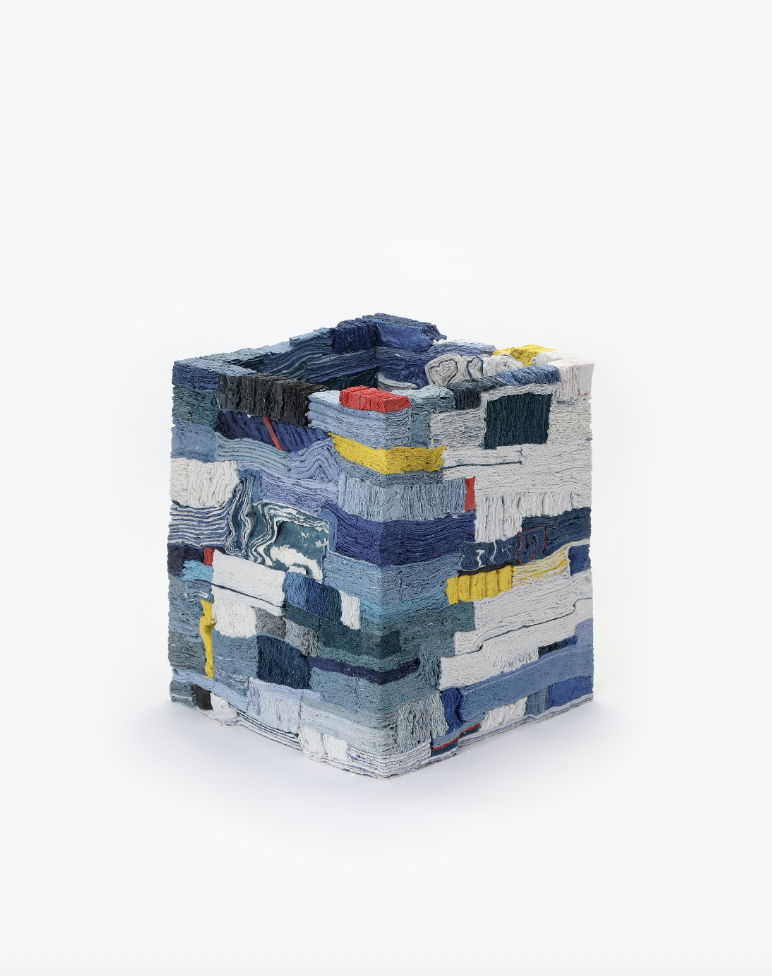
Dayhe Jeong, one of the pioneering designers presenting with SOLUNA FINE CRAFT (Seoul), has developed a unique craft working with horsehair, inspired by traditional Korean millinery weaves which she manipulates to create one of a kind, three dimensional objects. Committed to the notion of slow craft, Dayhe refers to her making as an “investment of time”, which she perceives to be the invisible material in her work. Among the pieces going on show in September is her A Time of Serenity (2025), a basket-shaped object measuring almost half a meter wide, exquisitely woven from black horsehair.
Also presenting is Gallery SKLO (Seoul), the city’s only gallery dedicated to contemporary glass, which is committed to exploring the sculptural and artistic potential of the medium, pushing its material boundary. Among the designers on show, Kira Kim is a pioneering figure of the first generation of Korea’s studio glass movement, dedicated to cast glass as her primary medium, with a practice that traverses the boundaries of craft and sculpture. Meanwhile, Joonyong Kim creates work through a unique and highly personal process known as ‘cast-blowing’, capturing and materializing the spectrum and ephemerality of natural light within glass, from sunrise to sunset. Gallery Sklo also demonstrates highly inventive uses of glass to capture the magnificence of nature, from the microscopic to the boundless. Jiyong Lee is known for his Cell Structure series, exploring the invisible systems of life through geometric abstraction in glass blocks that are cut, laminated, and cold-worked by hand to produce translucent sculptural forms; meanwhile, Sunghoon Park harnesses the sculptural language of glass to explore the essence of human existence and the universe. His signature VOID series features meticulously polished blown glass spheres, transformed into hexagonal facets that reveal prismatic, mineral-like colors reminiscent of auroras, offering abstract yet immersive visions of the cosmos.
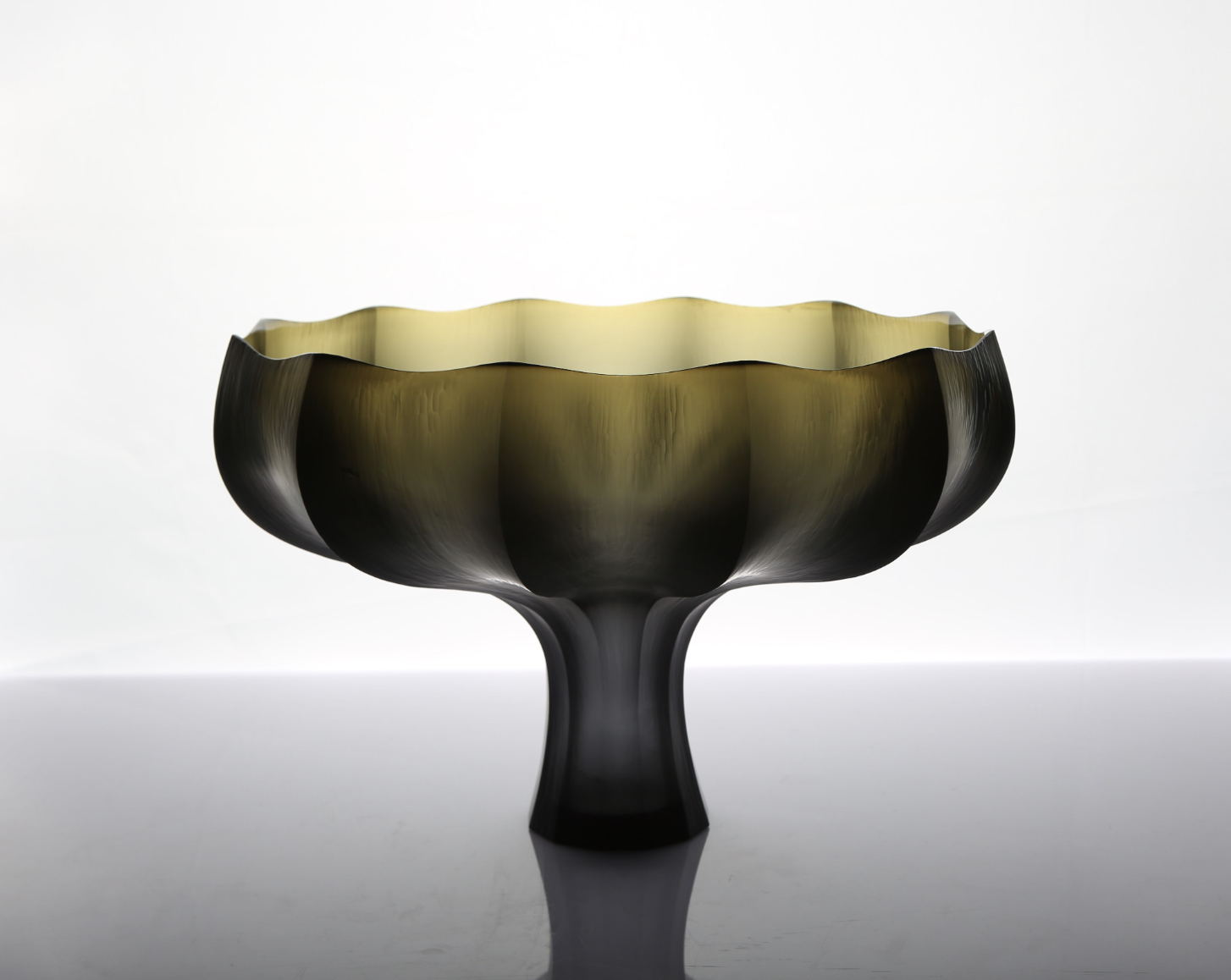
Preservation and The Natural World
Korean design also distinguishes itself with a respect for, and celebration of, the natural world and its resources. Preservation has always been a key focus: with techniques established over the centuries to preserve everything from food to artifacts, and this has also manifested in design traditions.
One poignant example comes from Seoul-based Kyounghee Kim, who employs a Korean patchwork tradition, known as “bojagi” to create a series of exquisite works, delicately crafted from silk organza. The practice is longstanding in Korean culture. Deeply rooted in everyday practices of the past, it was traditionally used to craft wraps and covers using leftover scraps of textile after creating clothes; demonstrating a historic design approach centered around sustainability and preservation.

Minwook Kim (Busan) demonstrates a deep respect for natural materials through his work with wood, which will be presented in September through a magnificent set of wooden vessels. Rather than manipulating the material to suit his own preferences, he thoughtfully reads its grain, curves, and gaps with care, so that cracks, warps, and knots become part of the story in his hands. In this way, rather than following a fixed design, his process begins with the material itself; his works remain in a flow of becoming, continuing the life of the tree from which they originate.
FABRIKR (Seoul) is a sustainability-focused design duo, best known for dedication to upcycling, breathing new life into existing materials by thoughtfully transforming everyday objects into entirely new expressions. For their presentation in September, the duo will present a new chapter in their practice: presenting fully original, self-initiated creations that extend their long-standing ethos of transformation, yet move beyond reimagined objects—an evolution that reflects their continued exploration of materiality, narrative, and unconventional form-making. In the exhibition, new works on show include FABRIKR’s Sparrow chair and Nest table, both crafted from epoxy resin, a signature material through the history of their practice; not just as a coating, but rather as a way of creating new forms and object identities.
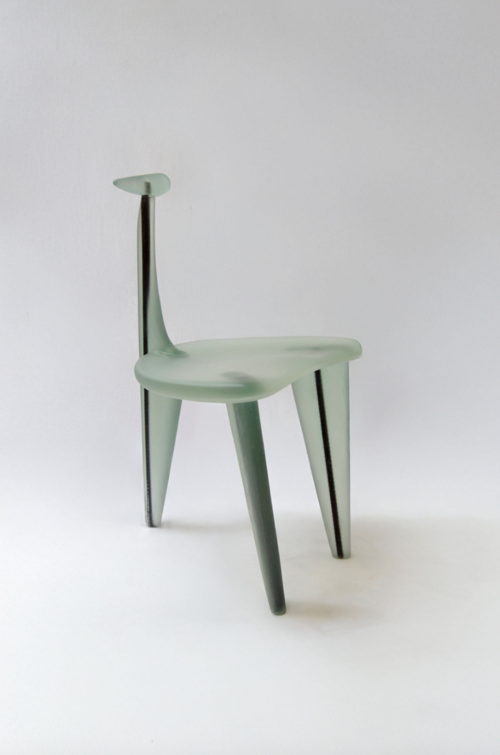
Jungin Lee, a descendant of Byung Hoon Choi presented by Charles Burnand Gallery (London), also speaks to themes of preservation and sustainability. Her approach to furniture-making underwent a profound transformation after the birth of her son. Becoming more conscious of environmental impact, she began to reflect on the amount of waste generated in the production process. This led her to revisit traditional Korean practices, where sustainability was a necessity due to limited resources. Inspired by these values, Lee turned to hanji—a traditional Korean paper made from the bark of the mulberry tree, historically used in the construction of Korean homes. Adapting the age-old technique of pasting hanji onto lattice windows, she now applies the same method to create her distinctive, sculptural chairs—merging tradition with contemporary design sensibilities.

